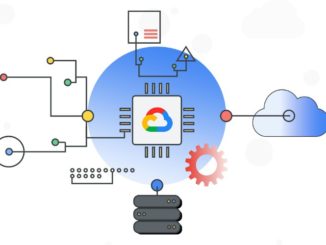
Microsoft is embedding Anaconda’s Python distribution into its Azure Machine Learning products, the latest move by the software vendor to expand its capabilities in the fast-growing artificial intelligence space and an example of Anaconda extending its reach beyond high performance computing and into AI.
The two companies announced the partnership this week at the Strata Data Conference in New York City, with the news dovetailing with other announcements around AI that Microsoft officials made this week at its own Ignite 2017 show. The vendors said they will offer Anaconda for Microsoft, which they described as a subset of the Anaconda Python distribution that is now available on Windows as well as MacOS and Linux. There will be a range of options within the Anaconda for Microsoft offering, they said.
Initially, Anaconda for Microsoft will be included in Microsoft’s Azure Machine Learning, Machine Learning Server, Visual Studio, and SQL Server, but there also will be additional advantages to developers. Those who use the R language using Anaconda’s R Essentials package also will have Microsoft R Open packages available by default. In addition, Visual Studio Code, R Client and R Tools for Visual Studio Code will be included in the Anaconda Navigator, which is a GUI included in the Python distribution designed to make it easier for developers and data scientists to more easily launch applications and navigate the Anaconda environment.
Anaconda CEO Scott Collison said in a statement that through the partnership with Microsoft, users can “apply the power of Anaconda Python to derive insights and make predictions in real time from inside Microsoft products and services.” According to the company, which until the end of August had been named Continuum Analytics, there are more than 4.5 million users of its Python data science distribution. That’s a lot of data scientists that will now have a clearer avenue into Azure as Microsoft competes against the likes of Amazon Web Services, Google Cloud and IBM in the public cloud market. Joseph Sirosh, corporate vice president in Microsoft’s Data Group, said Anaconda for Microsoft will give its data platform and cloud customers more open-source tools for doing high-performance analytics and machine learning.
Like other top software and cloud providers, Microsoft officials are pushing to rapidly expand the company’s capabilities with machine learning and AI. At the Ignite show, Microsoft made several announcements around the idea of using AI to help modernize business processes and integrating AI with cloud and mixed reality technologies. The company expanded its Dynamics 365 lineup of business applications to include new AI-based solutions for complex enterprise environments. Initially that will include an intelligent virtual agent for customer care, an intelligent assistant for customer service staff and conversation management tools that are powered by Microsoft AI. The company’s AI offerings including a development platform that leverages cognitive services, Bot Framework for conversational AI, and a machine learning platform on Azure.
Microsoft also said it was adding intelligent search features using AI and machine learning to its Bing for business search engine. Within the Azure stack – which officials said is designed for AI, including the infrastructure, development tools and services – Microsoft introduced its Machine Learning Workbench for data scientists and developers.
“These new capabilities provide rapid data wrangling and agile experimentation using familiar and open tools. AI developers and data scientists can now use Azure Machine Learning to develop, experiment and deploy AI models on any type of data, on any scale, in Azure and on-premises,” Scott Guthrie, executive vice president for cloud and enterprise at Microsoft, wrote in a post on the company blog.
The announcements this week at Strata and Ignite were just the latest steps by Microsoft to infuse AI throughout the product portfolio, such as Cortana, since Satya Nadella took over as CEO in 2014. The company is competing with the likes of Amazon, Google, IBM, Facebook, Apple, Salesforce, Twitter and Baidu in the push to leverage AI and machine learning in their product offerings and services.
To get there, Microsoft is relying on both internal development and acquisitions. Last year, the company bought Genee, an AI-powered meeting scheduling service that used natural language processing and decision-making algorithms for its virtual assistant. Microsoft is leveraging the technology in Office 365. In January, the company Maluuba, which came with a deep learning research lab for natural language processing.
To Anaconda officials, expanding into AI was a natural move. As The Next Platform noted two years ago, Anaconda – then Continuum – was among the Python distributors that drove the shift of the programming language from the enterprise and into the HPC space, which was dominated by MPI and Fortran and C. Fueling the shift was a combination of new developers coming into the field with experience in Python and a growing number of domain specialists in scientific computing looking for a faster way to deal with complex questions and massive amounts of data. Anaconda’s Python distribution was designed for research and commercial HPC.
In a post on the company blog when announcing the name change to Anaconda, Travis Oliphant, co-founder, president, and chief data scientist, said the company that was founded to offer open source software to accelerate innovation is now “manifesting in artificial intelligence, machine learning – that’s what’s hot. . . . There are a lot of people doing artificial intelligence and machine learning, and most are using Anaconda to do it.”





Be the first to comment